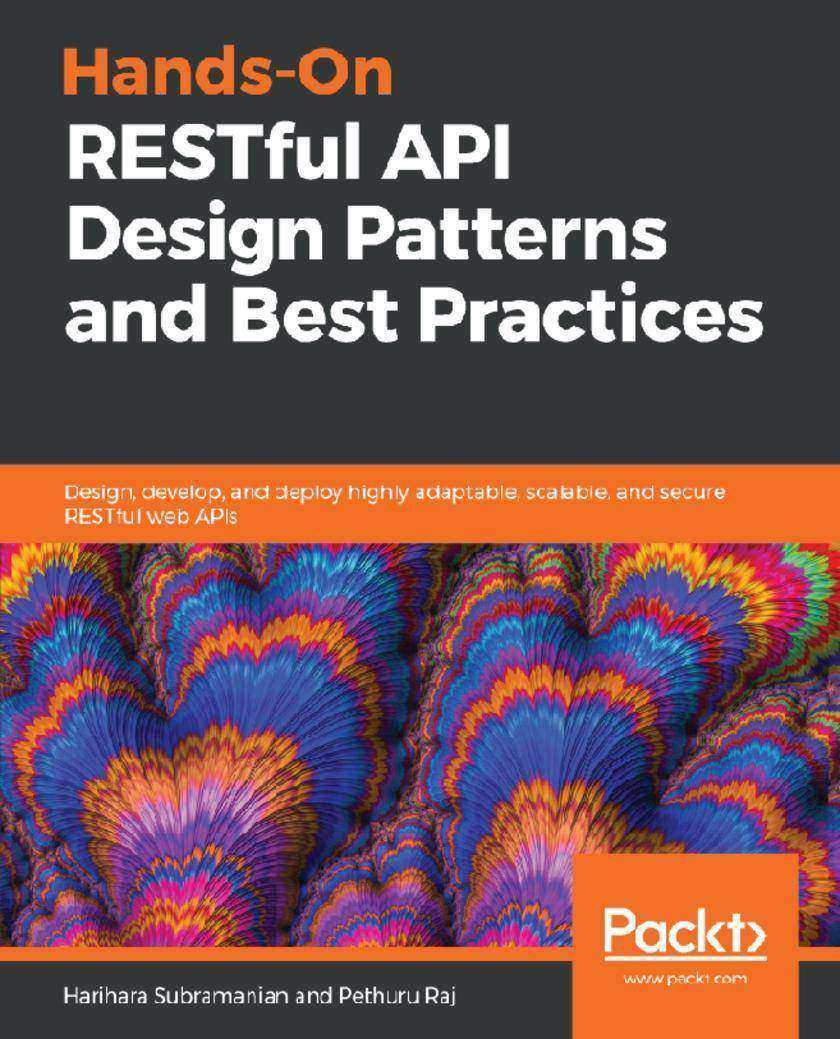
Hands-On RESTful API Design Patterns and Best Practices
¥73.02
Build effective RESTful APIs for enterprise with design patterns and REST framework’s out-of-the-box capabilities Key Features * Understand advanced topics such as API gateways, API securities, and cloud * Implement patterns programmatically with easy-to-follow examples * Modernize legacy codebase using API connectors, layers, and microservices Book Description This book deals with the Representational State Transfer (REST) paradigm, which is an architectural style that allows networked devices to communicate with each other over the internet. With the help of this book, you’ll explore the concepts of service-oriented architecture (SOA), event-driven architecture (EDA), and resource-oriented architecture (ROA). This book covers why there is an insistence for high-quality APIs toward enterprise integration. It also covers how to optimize and explore endpoints for microservices with API gateways and touches upon integrated platforms and Hubs for RESTful APIs. You’ll also understand how application delivery and deployments can be simplified and streamlined in the REST world. The book will help you dig deeper into the distinct contributions of RESTful services for IoT analytics and applications. Besides detailing the API design and development aspects, this book will assist you in designing and developing production-ready, testable, sustainable, and enterprise-grade APIs. By the end of the book, you’ll be empowered with all that you need to create highly flexible APIs for next-generation RESTful services and applications. What you will learn * Explore RESTful concepts, including URI, HATEOAS, and Code on Demand * Study core patterns like Statelessness, Pagination, and Discoverability * Optimize endpoints for linked microservices with API gateways * Delve into API authentication, authorization, and API security implementations * Work with Service Orchestration to craft composite and process-aware services * Expose RESTful protocol-based APIs for cloud computing Who this book is for This book is primarily for web, mobile, and cloud services developers, architects, and consultants who want to build well-designed APIs for creating and sustaining enterprise-class applications. You’ll also benefit from this book if you want to understand the finer details of RESTful APIs and their design techniques along with some tricks and tips.
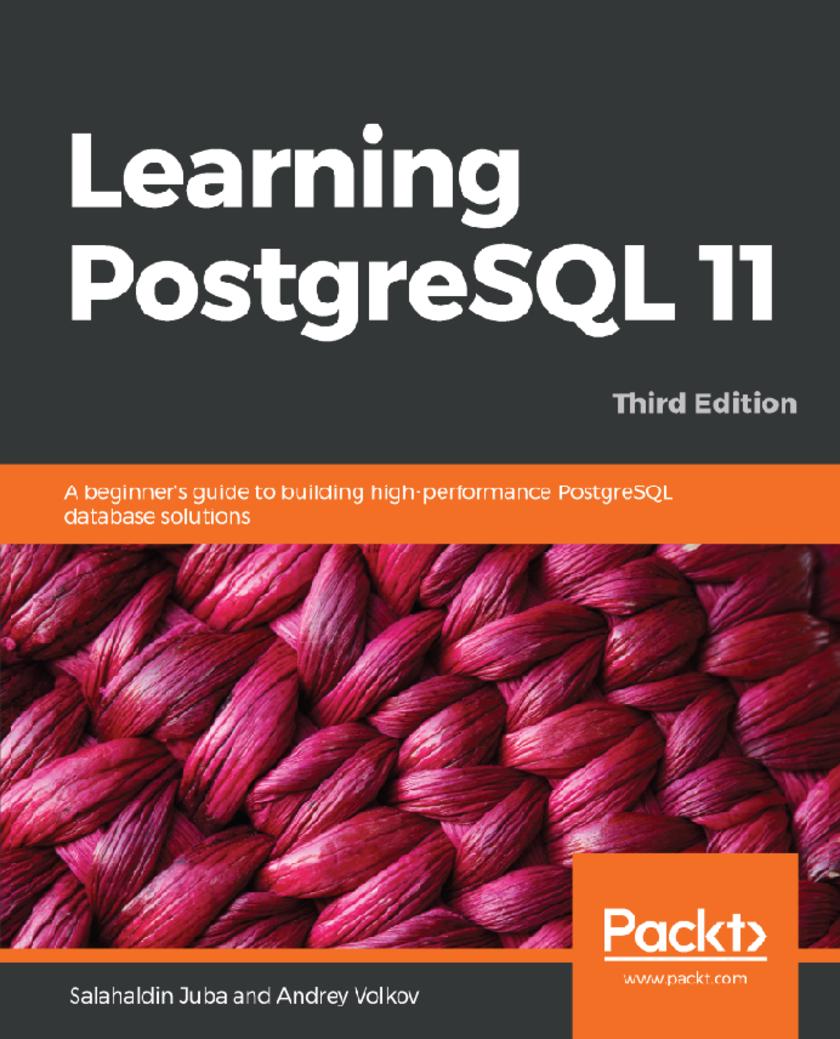
Learning PostgreSQL 11
¥73.02
Leverage the power of PostgreSQL 11 to build powerful database and data warehousing applications Key Features * Monitor, secure, and fine-tune your PostgreSQL 11 database * Learn client-side and server-side programming using SQL and PL/pgSQL * Discover tips on implementing efficient database solutions Book Description PostgreSQL is one of the most popular open source database management systems in the world, and it supports advanced features included in SQL standards. This book will familiarize you with the latest features in PostgreSQL 11, and get you up and running with building efficient PostgreSQL database solutions from scratch. Learning PostgreSQL, 11 begins by covering the concepts of relational databases and their core principles. You’ll explore the Data Definition Language (DDL) and commonly used DDL commands supported by ANSI SQL. You’ll also learn how to create tables, define integrity constraints, build indexes, and set up views and other schema objects. As you advance, you’ll come to understand Data Manipulation Language (DML) and server-side programming capabilities using PL/pgSQL, giving you a robust background to develop, tune, test, and troubleshoot your database application. The book will guide you in exploring NoSQL capabilities and connecting to your database to manipulate data objects. You’ll get to grips with using data warehousing in analytical solutions and reports, and scaling the database for high availability and performance. By the end of this book, you’ll have gained a thorough understanding of PostgreSQL 11 and developed the necessary skills to build efficient database solutions. What you will learn * Understand the basics of relational databases, relational algebra, and data modeling * Install a PostgreSQL server, create a database, and implement your data model * Create tables and views, define indexes and stored procedures, and implement triggers * Make use of advanced data types such as Arrays, hstore, and JSONB * Connect your Python applications to PostgreSQL and work with data efficiently * Identify bottlenecks to enhance reliability and performance of database applications Who this book is for This book is for you if you're interested in learning about PostgreSQL from scratch. Those looking to build solid database or data warehousing applications or wanting to get up to speed with the latest features of PostgreSQL 11 will also find this book useful. No prior knowledge of database programming or administration is required to get started.
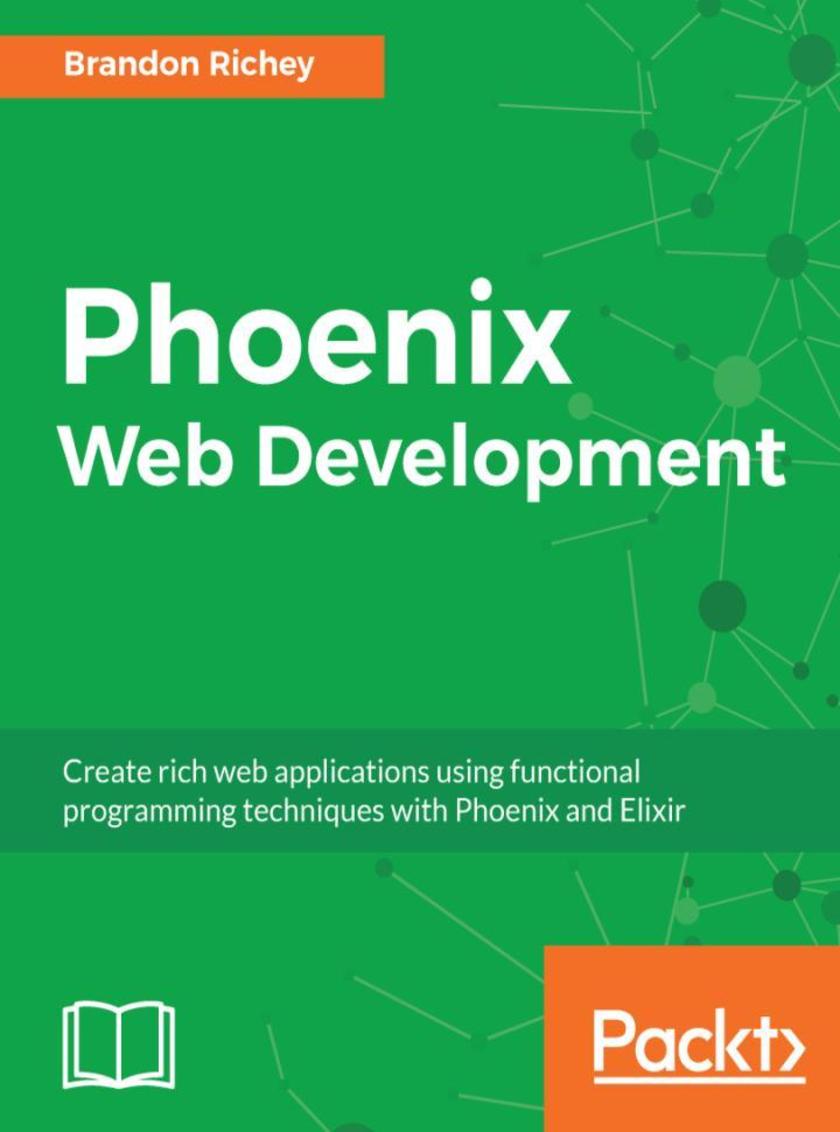
Phoenix Web Development
¥73.02
Learn to build a high-performance functional prototype of a voting web application from scratch using Elixir and Phoenix About This Book ? Build a strong foundation in Functional-Programming techniques while learning to build compelling web applications ? Understand the Elixir Concurrency and parallelization model to build high-performing blazingly fast applications ? Learn to test, debug and deploy your web applications using Phoenix framework Who This Book Is For This book is for people with a basic knowledge of Elixir, who want to start building web applications. Prior experience with web technologies is assumed. What You Will Learn ? Learn Phoenix Framework fundamentals and v1.3's new application structure ? Build real-time applications with channels and presence ? Utilize GenServers and other OTP fundamentals to keep an application stable ? Track users as they sign in and out of chat with Phoenix’s built-in presence functionality ? Write your own database interaction code that is safe, bug-free, and easy to work with ? Explore testing and debugging methodologies to understand a real software development lifecycle for a Phoenix application ? Deploy and run your Phoenix application in production In Detail Phoenix is a modern web development framework that is used to build API’s and web applications. It is built on Elixir and runs on Erlang VM which makes it much faster than other options. With Elixir and Phoenix, you build your application the right way, ready to scale and ready for the increasing demands of real-time web applications. This book covers the basics of the Phoenix web framework, showing you how to build a community voting application, and is divided into three parts. In the first part, you will be introduced to Phoenix and Elixir and understand the core terminologies that are used to describe them. You will also learn to build controller pages, store and retrieve data, add users to your app pages and protect your database. In the second section you will be able to reinforce your knowledge of architecting real time applications in phoenix and not only debug these applications but also diagnose issues in them. In the third and final section you will have the complete understanding of deploying and running the phoenix application and should be comfortable to make your first application release By the end of this book, you'll have a strong grasp of all of the core fundamentals of the Phoenix framework, and will have built a full production-ready web application from scratch. Style and approach Covers the basics of the Phoenix web framework by building a complete real-time application and showing the new structure changes introduced in Phoenix v1.3
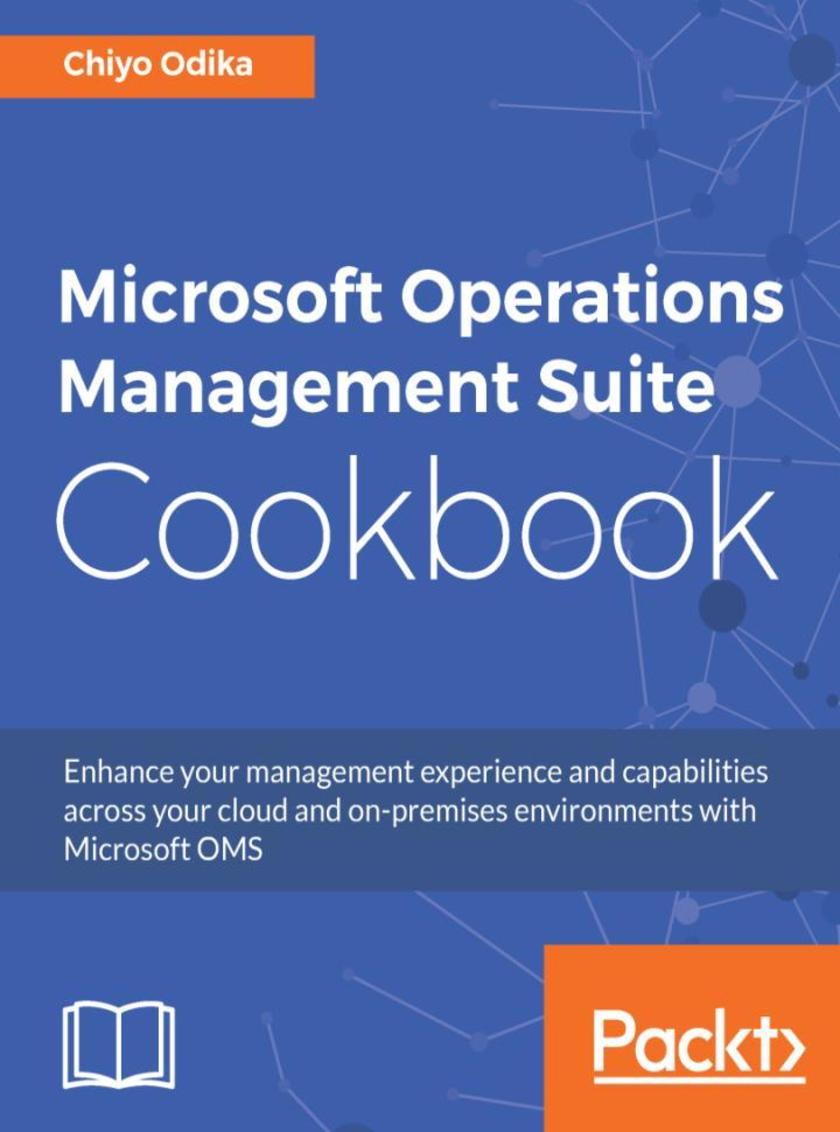
Microsoft Operations Management Suite Cookbook
¥73.02
Manage on-premises and cloud IT assets from one console About This Book ? Empower yourself with practical recipes to collect and analyze operational insights on Windows and Linux servers in your on premises datacenters and in any public cloud environments such as Azure and AWS. ? Build capabilities through practical tasks and techniques to collect and analyze machine data ? Address business challenges and discover means to accommodate workloads and instances in a low cost manner Who This Book Is For This book is written for the IT professional and general reader who is interested in technology themes such as DevOps, Big Data Analytics, and digital transformation concepts. Azure and other cloud platform administrators, cloud professionals, and technology analysts who would like to solve everyday problems quickly and efficiently with hybrid management tools available in the Microsoft product ecosystem will derive much value from this book. Prior experience with OMS 2012 would be helpful. What You Will Learn ? Understand the important architectural considerations and strategies for OMS ? Use advanced search query commands and strategies to derive insights from indexed data ? Make use of alerting in OMS such as alert actions, and available options for the entire lifecycle of the alert ? Discover some practical tips for monitoring Azure container service containers and clusters using OMS ? Review and use the backup options available through the Azure backup service, as well as data recovery options available through Azure Site Recovery (ASR) ? Understand how to advance important DevOps concepts within your IT organization ? Learn how to manage configurations and automate process In Detail Microsoft Operations Management Suite Cookbook begins with an overview of how to hit the ground running with OMS insights and analytics. Next, you will learn to search and analyze data to retrieve actionable insights, review alert generation from the analyzed data, and use basic and advanced Log search queries in Azure Log Analytics. Following this, you will explore some other management solutions that provide functionality related to workload assessment, application dependency mapping, automation and configuration management, and security and compliance. You will also become well versed with the data protection and recovery functionalities of OMS Protection and Recovery, and learn how to use Azure Automation components and features in OMS. Finally you will learn how to evaluate key considerations for using the Security and Audit solution, and working with Security and Compliance in OMS. By the end of the book, you will be able to configure and utilize solution offerings in OMS, understand OMS workflows, how to unlock insights, integrate capabilities into new or existing workflows, manage configurations, and automate tasks and processes. Style and approach This is a recipe based guide where early chapters introduce the main concepts and key capabilities, and the later chapters delve into more advance concepts.
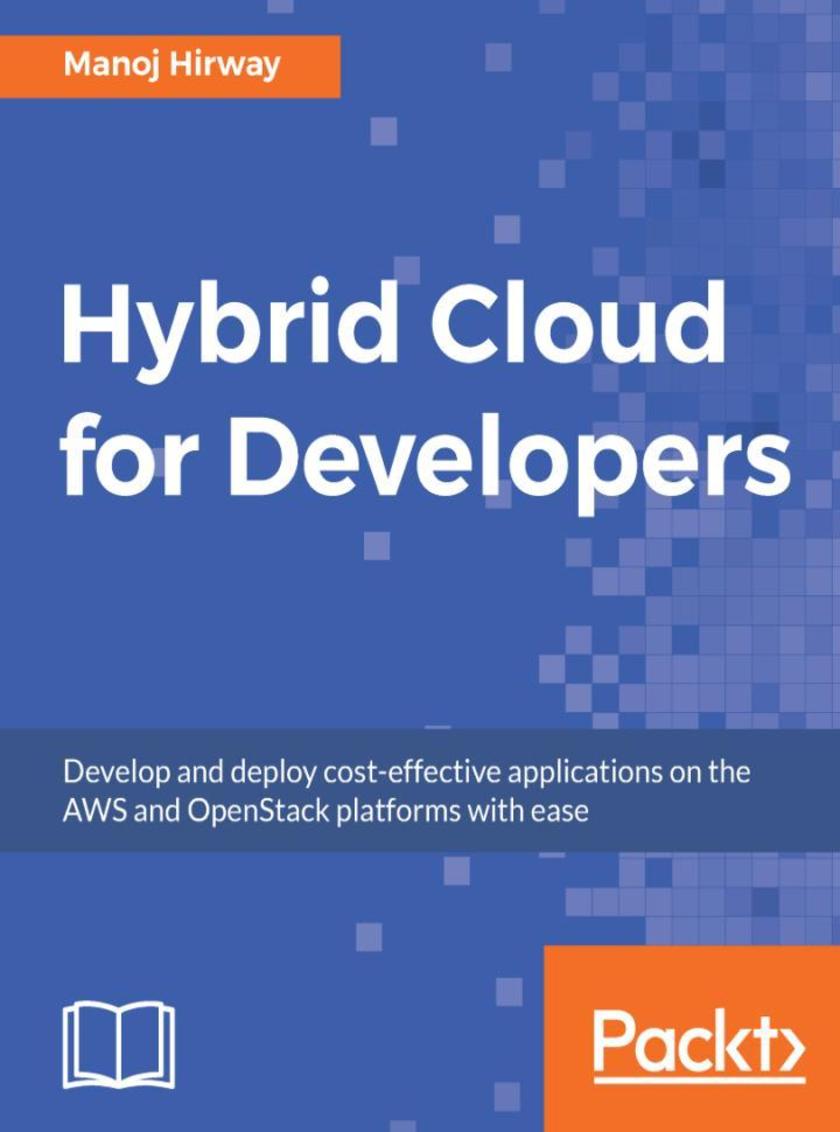
Hybrid Cloud for Developers
¥73.02
Develop and manage applications on the AWS and OpenStack platforms with this comprehensive learning guide. About This Book ? A step-by-step guide to help you develop applications on the hybrid cloud platform. ? Acquire an in-depth understanding of the OpenStack and AWS cloud platforms. ? Extensive source code examples for OpenStack and AWS applications. ? Easily troubleshoot OpenStack and AWS issues. ? Understand the best practices and security measures for the hybrid cloud platform. Who This Book Is For If you are an IT professional, developer, or a DevOps engineer looking to develop and manage your applications on the hybrid cloud platform, then this book is for you. Some prior knowledge of the public and private cloud will enhance your skills. Developers looking to build applications using AWS or OpenStack services will also benefit from this book. What You Will Learn ? Understand the hybrid cloud platform ? Explore the AWS and OpenStack cloud platforms in depth ? Develop AWS applications with source code examples ? Develop OpenStack applications with source code examples ? Troubleshoot OpenStack and AWS ? Learn hybrid cloud best practices ? Understand security measures on the hybrid cloud In Detail This book introduces you to the hybrid cloud platform, and focuses on the AWS public cloud and OpenStack private cloud platforms. It provides a deep dive into the AWS and OpenStack cloud platform services that are essential for developing hybrid cloud applications. You will learn to develop applications on AWS and OpenStack platforms with ease by leveraging various cloud services and taking advantage of PaaS. The book provides you with the ability to leverage the flexibility of choosing a cloud platform for migrating your existing resources to the cloud, as well as developing hybrid cloud applications that can migrate virtual machine instances from AWS to OpenStack and vice versa. You will also be able to build and test cloud applications without worrying about the system that your development environment supports. The book also provides an in-depth understanding of the best practices that are followed across the industry for developing cloud applications, as well as for adapting the hybrid cloud platform. Lastly, it also sheds light on various troubleshooting techniques for OpenStack and AWS cloud platform services that are consumed by hybrid cloud applications. By the end of this book, you will have a deep understanding of the hybrid cloud platform and will be able to develop robust, efficient, modular, scalable, and ?exible cloud applications. Style and approach This book follows a practical approach to become familiar with the AWS and OpenStack platform from a developer's perspective.
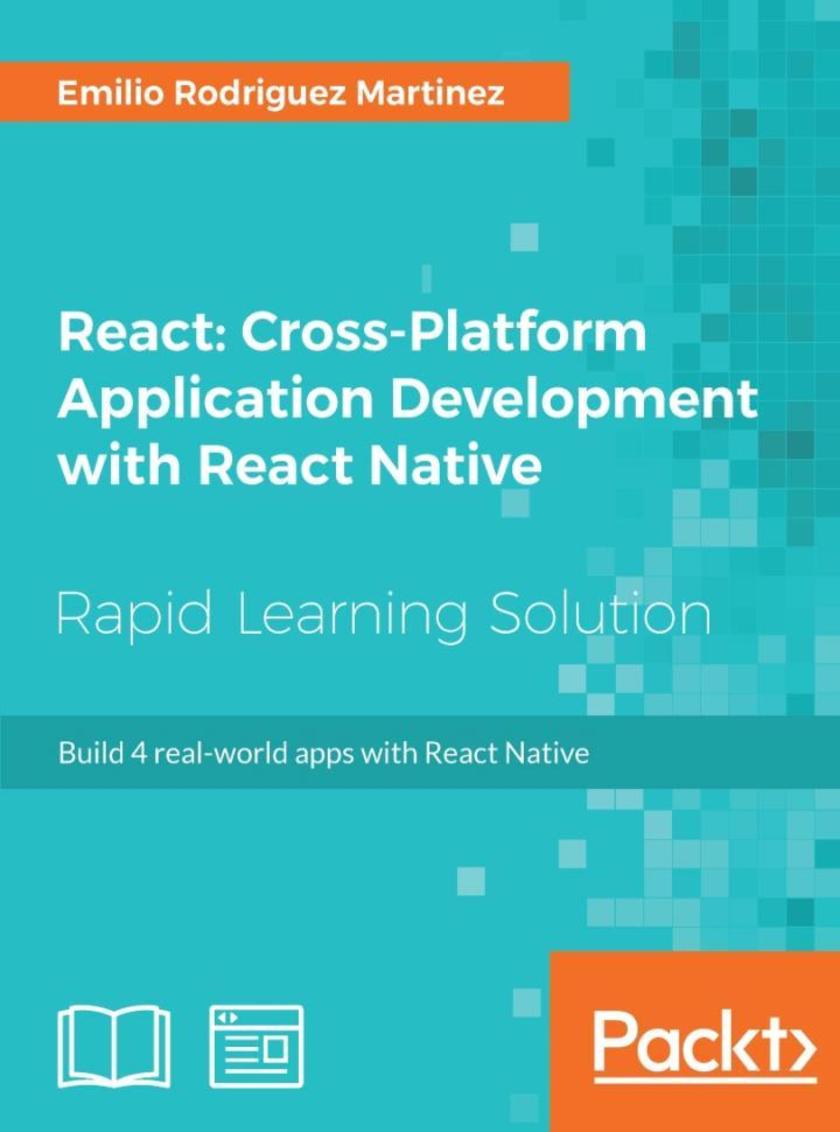
React: Cross-Platform Application Development with React Native
¥73.02
Harness the power of React Native to build 4 real-world apps About This Book ? Build quirky and fun projects from scratch and become efficient with React Native ? Learn to build professional Android and iOS applications using your existing JavaScript knowledge ? Use isomorphic principles to build mobile apps that offer a native user experience ? Embedded with assessments that will help you revise the concepts you have learned in this course Who This Book Is For This book is for developers who want to build amazing cross-platform apps with React Native. What You Will Learn ? Structure React Native projects to ease maintenance and extensibility ? Optimize a project to speed up development ? Use external modules to speed up the development and maintenance of your projects ? Explore the different UI and code patterns to be used for iOS and Android ? Get to know the best practices when building apps in React Native In Detail React Native helps web and mobile developers to build cross-platform apps that perform at the same level as any other natively developed app. The range of apps that can be built using this library is huge. From e-commerce to games, React Native is a good fit for any mobile project due to its flexibility and extendable nature. This project-based book consists of four standalone projects. Each project will help you gain a sound understanding of the framework and build mobile apps with native user experience. Starting with a simple standalone car booking app, you will progressively move on to building advanced apps by adding connectivity with external APIs, using native features, such as the camera or microphone, in the mobile device, integrating with state management libraries such as Redux or MobX, or leveraging React Native’s performance by building a full-featured game. This book is ideal for developers who want to build amazing cross-platform apps with React Native. This book is embedded with useful assessments that will help you revise the concepts you have learned in this book. Style and approach This project-based book consists of four projects. Each project is a standalone project that covers the core techniques and concepts of React Native. Note: This book is a blend of text and quizzes, all packaged up keeping your journey in mind. It includes content from the following Packt products: ? React Native Blueprints by Emilio Rodriguez Martinez
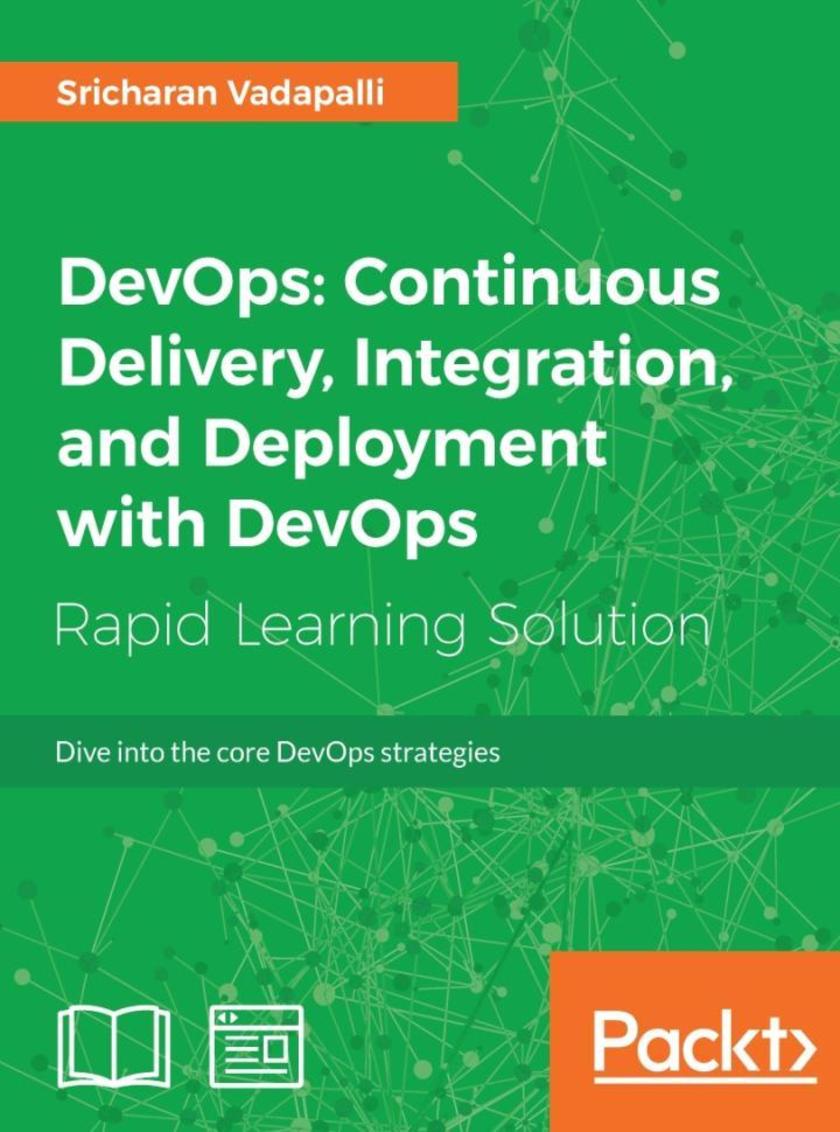
DevOps: Continuous Delivery, Integration, and Deployment with DevOps
¥73.02
Explore the high-in demand core DevOps strategies with powerful DevOps tools such as Ansible, Jenkins, and Chef About This Book ? Get acquainted with methodologies and tools of the DevOps framework ? Perform continuous integration, delivery, deployment, and monitoring using DevOps tools ? Explore popular tools such as Git, Jenkins, Maven, Gerrit, Nexus, Selenium, and so on ? Embedded with assessments that will help you revise the concepts you have learned in this book Who This Book Is For This book is for engineers, architects, and developers, who wish to learn the core strategies of DevOps. What You Will Learn ? Get familiar with life cycle models, maturity states, progression and best practices of DevOps frameworks ? Learn to set up Jenkins and integrate it with Git ? Know how to build jobs and perform testing with Jenkins ? Implement infrastructure automation (Infrastructure as Code) with tools such as Chef and Ansible ? Understand continuous monitoring process with tools such as Splunk and Nagios ? Learn how Splunk improves the code quality In Detail DevOps is the most widely used software engineering culture and practice that aim sat software development and operation. Continuous integration is a cornerstone technique of DevOps that merges software code updates from developers into a shared central mainline. This book takes a practical approach and covers the tools and strategies of DevOps. It starts with familiarizing you with DevOps framework and then shows how toper form continuous delivery, integration, and deployment with DevOps. You will explore DevOps process maturity frameworks and progression models with checklist templates for each phase of DevOps. You will also be familiar with agile terminology, methodology, and the benefits accrued by an organization by adopting it. You will also get acquainted with popular tools such as Git, Jenkins ,Maven, Gerrit, Nexus, Selenium, and so on.You will learn configuration, automation, and the implementation of infrastructure automation (Infrastructure as Code) with tools such as Chef and Ansible. This book is ideal for engineers, architects, and developers, who wish to learn the core strategies of DevOps. Style and approach This book takes a practical approach and covers the tools and strategies of DevOps. It starts with familiarizing you with DevOps framework and then shows how to perform continuous delivery, integration, and deployment with DevOps. Note: This book is a blend of text and quizzes, all packaged up keeping your journey in mind. It includes content from the following Packt product: ? Hands-on DevOps by Sricharan Vadapalli
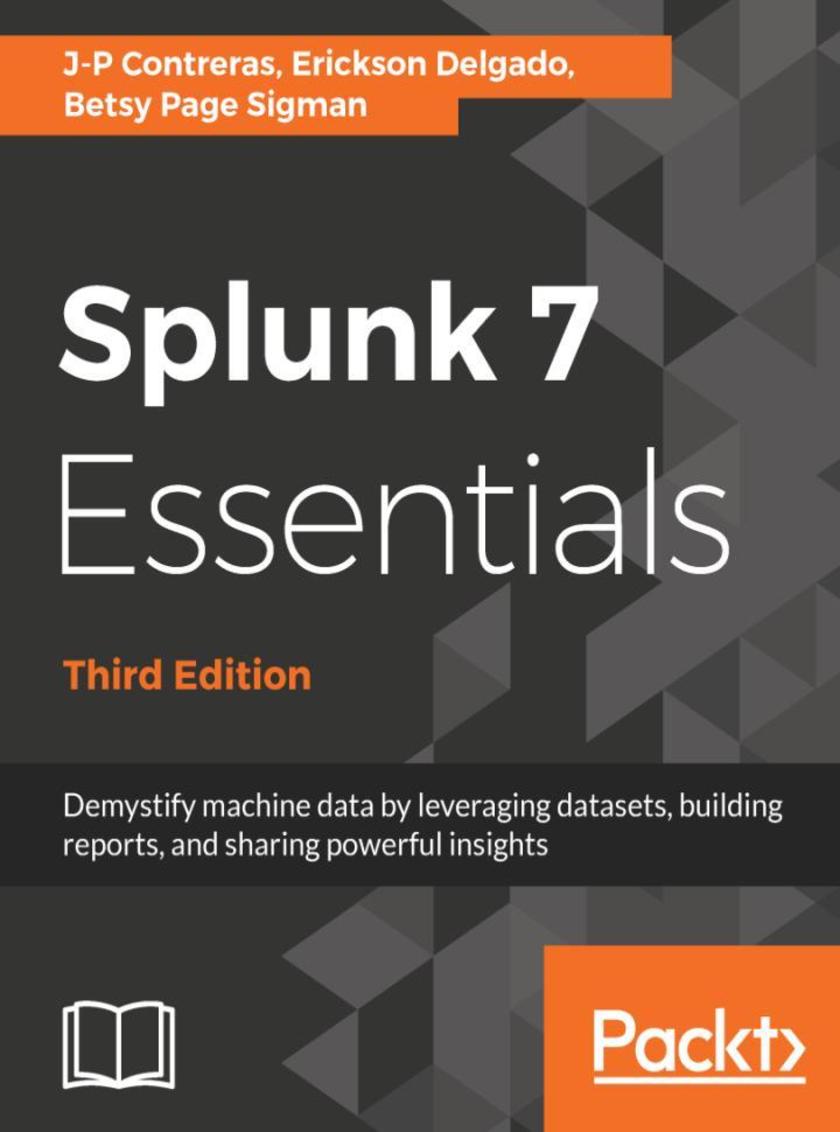
Splunk 7 Essentials - Third Edition
¥73.02
Transform machine data into powerful analytical intelligence using Splunk About This Book ? Analyze and visualize machine data to step into the world of Splunk! ? Leverage the exceptional analysis and visualization capabilities to make informed decisions for your business ? This easy-to-follow, practical book can be used by anyone - even if you have never managed data before Who This Book Is For This book is for the beginners who want to get well versed in the services offered by Splunk 7. If you want to be a data/business analyst or want to be a system administrator, this book is what you want. No prior knowledge of Splunk is required. What You Will Learn ? Install and configure Splunk for personal use ? Store event data in Splunk indexes, classify events into sources, and add data fields ? Learn essential Splunk Search Processing Language commands and best practices ? Create powerful real-time or user-input dashboards ? Be proactive by implementing alerts and scheduled reports ? Tips from the Fez: best practices using Splunk features and add-ons ? Understand security and deployment considerations for taking Splunk to an organizational level In Detail Splunk is a search, reporting, and analytics software platform for machine data, which has an ever-growing market adoption rate. More organizations than ever are adopting Splunk to make informed decisions in areas such as IT operations, information security, and the Internet of Things. The first two chapters of the book will get you started with a simple Splunk installation and set up of a sample machine data generator, called Eventgen. After this, you will learn to create various reports, dashboards, and alerts. You will also explore Splunk's Pivot functionality to model data for business users. You will then have the opportunity to test-drive Splunk's powerful HTTP Event Collector. After covering the core Splunk functionality, you'll be provided with some real-world best practices for using Splunk, and information on how to build upon what you've learned in this book. Throughout the book, there will be additional comments and best practice recommendations from a member of the SplunkTrust Community, called "Tips from the Fez". Style and approach This fast-paced, example-rich guide will help you analyze and visualize machine data with Splunk through simple, practical instructions and recommendations.
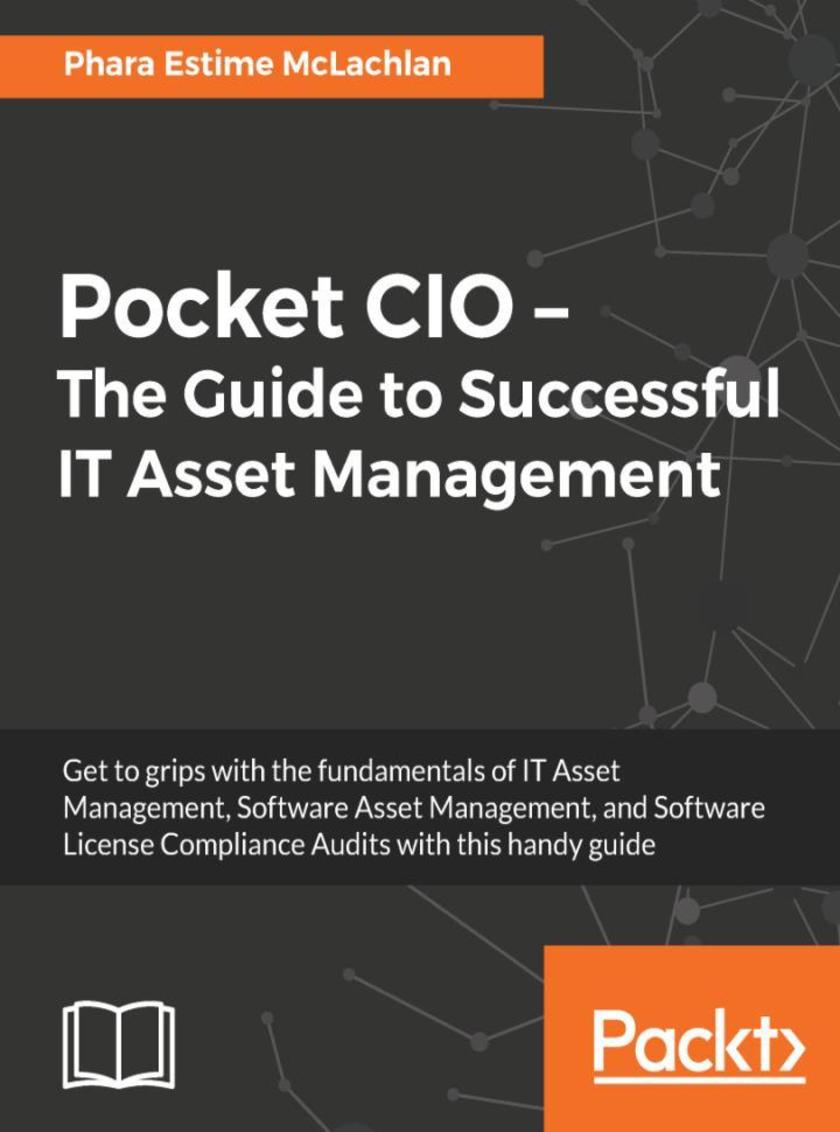
Pocket CIO – The Guide to Successful IT Asset Management
¥73.02
Create and manage a clear working IT asset management strategy with this unique guide About This Book ? A detailed IT Asset Management (ITAM) guidebook with real-world templates that can be converted into working ITAM documents. ? Includes in-depth discussion on how risk management has changed and the possible solutions needed to address the new normal ? A step-by-step ITAM manual for newbies as well as seasoned ITAM veterans Who This Book Is For This book is intended for CIOs, VPs and CTOs of mid to large-sized enterprises and organizations. If you are dealing with changes such as mergers, acquisitions, divestitures, new products or services, cyber security, mandated regulations, expansion, and much more, this book will help you too. What You Will Learn ? Close the hidden risk gaps created by IT assets (hardware and software) ? Create and manage a clear working proactive ITAM and SAM program and policy ? A clear, concise explanation of what IT Asset Management is, the benefits, and results ? A clear, concise explanation of what Software Asset Management is, the benefits, and results ? The best ways to manage a software audit and how to be prepared for one ? Considerations for selecting the best technology for a specific company including what questions should be asked at the onset. ? Increasing ITAM program and project success with change management In Detail IT Asset Management (ITAM) supports life cycle management and strategic decision making for an IT environment. This book is a detailed IT Asset Management (ITAM) guidebook with real-world templates that can be converted into working ITAM documents. It is a step-by-step IT asset management manual for the newbies as well as the seasoned ITAM veterans, providing a unique insight into asset management. It discusses how risk management has changed over time and the possible solutions needed to address the new normal. The book also includes considerations for selecting the best technology for a specific company including what questions should be asked at the onset, as well as the best ways to manage a software audit and how to be prepared for one. This book is your perfect guide to create holistic IT asset management and Software asset management programs that close the risk gaps, increases productivity and results in cost efficiencies. It allows the IT Asset Managers, Software Asset Managers, and/or the full IT Asset Management (ITAM) ITAM/SAM program team to take a deep dive by using the templates offered in the guidebook. You will be aware of the specific roles and responsibilities for every aspect of IT asset management, software asset management, and software license compliance audit response. By the end of this book, you will be well aware of what IT and Software Asset Management is all about and the different steps, processes, and roles required to truly master it. By the end of this book, you will be well aware of what IT Asset Management is all about and the different skills required to truly master it. Style and approach Packed with important discussion points, examples, case studies, templates, and checklists.
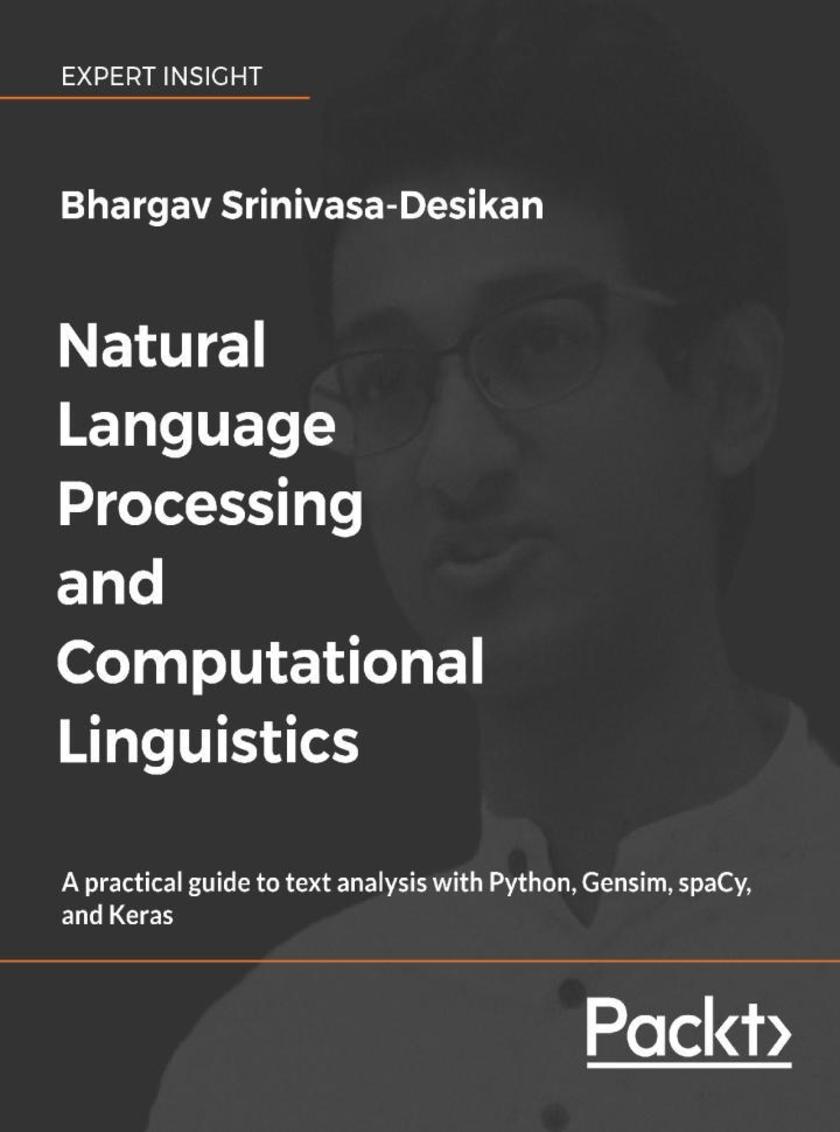
Natural Language Processing and Computational Linguistics
¥73.02
Work with Python and powerful open source tools such as Gensim and spaCy to perform modern text analysis, natural language processing, and computational linguistics algorithms. About This Book ? Discover the open source Python text analysis ecosystem, using spaCy, Gensim, scikit-learn, and Keras ? Hands-on text analysis with Python, featuring natural language processing and computational linguistics algorithms ? Learn deep learning techniques for text analysis Who This Book Is For This book is for you if you want to dive in, hands-first, into the interesting world of text analysis and NLP, and you're ready to work with the rich Python ecosystem of tools and datasets waiting for you! What You Will Learn ? Why text analysis is important in our modern age ? Understand NLP terminology and get to know the Python tools and datasets ? Learn how to pre-process and clean textual data ? Convert textual data into vector space representations ? Using spaCy to process text ? Train your own NLP models for computational linguistics ? Use statistical learning and Topic Modeling algorithms for text, using Gensim and scikit-learn ? Employ deep learning techniques for text analysis using Keras In Detail Modern text analysis is now very accessible using Python and open source tools, so discover how you can now perform modern text analysis in this era of textual data. This book shows you how to use natural language processing, and computational linguistics algorithms, to make inferences and gain insights about data you have. These algorithms are based on statistical machine learning and artificial intelligence techniques. The tools to work with these algorithms are available to you right now - with Python, and tools like Gensim and spaCy. You'll start by learning about data cleaning, and then how to perform computational linguistics from first concepts. You're then ready to explore the more sophisticated areas of statistical NLP and deep learning using Python, with realistic language and text samples. You'll learn to tag, parse, and model text using the best tools. You'll gain hands-on knowledge of the best frameworks to use, and you'll know when to choose a tool like Gensim for topic models, and when to work with Keras for deep learning. This book balances theory and practical hands-on examples, so you can learn about and conduct your own natural language processing projects and computational linguistics. You'll discover the rich ecosystem of Python tools you have available to conduct NLP - and enter the interesting world of modern text analysis. Style and approach The book teaches NLP from the angle of a practitioner as well as that of a student. This is a tad unusual, but given the enormous speed at which new algorithms and approaches travel from scientific beginnings to industrial implementation, first principles can be clarified with the help of entirely practical examples.
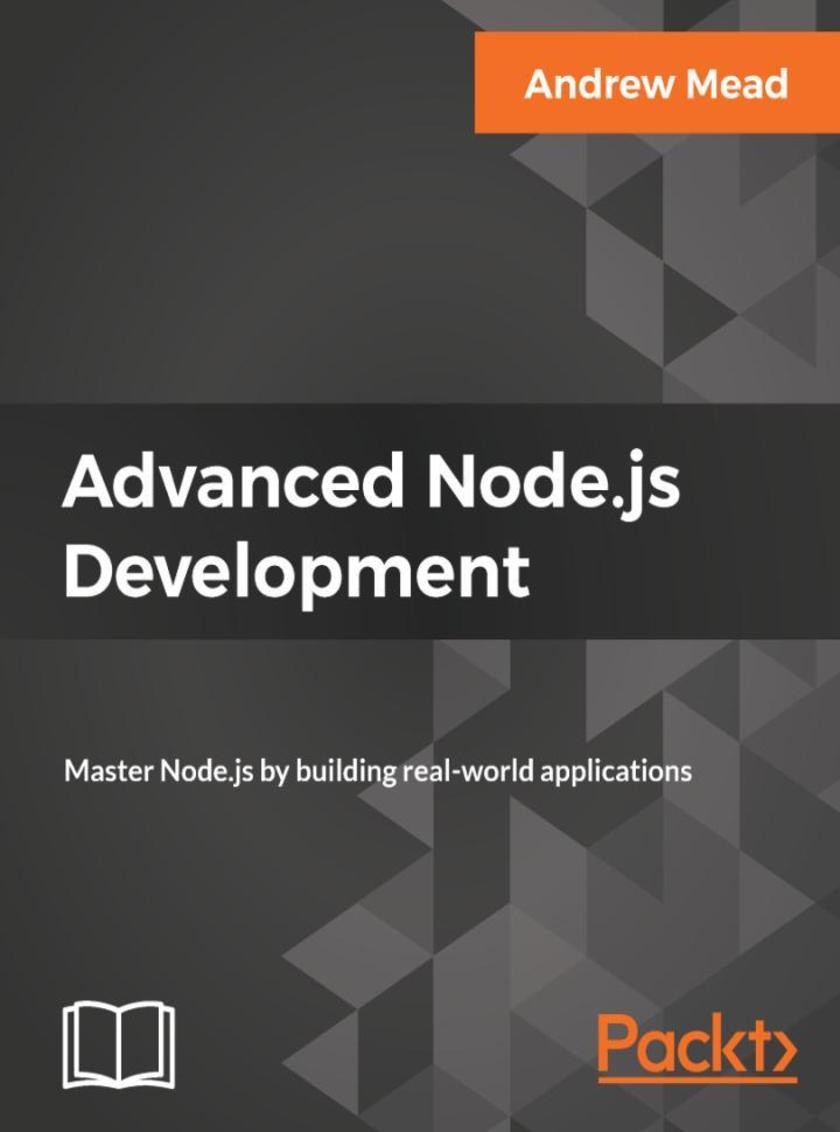
Advanced Node.js Development
¥73.02
Takes you through creating your own API, building a full real-time web app, securing your Node systems, and practical applications of the latest Async and Await technologies. It maps out everything in a comprehensive, easy-to-follow package designed to get you up and running quickly. About This Book ? Entirely project-based and practical ? Explains the "why" of Node.js features, not just the "how", providing with a deep understanding and enabling you to easily apply concepts in your own applications ? Covers the full range of technologies around Node.js – npm, MongoDB, version control with Git, and many more Who This Book Is For This book is for anyone looking to launch their own Node applications, switch careers, or freelance as a Node developer. You should have a basic understanding of JavaScript in order to follow this book. This book follows directly on from Learning Node.js Development, but more advanced readers can benefit from this book without having read the first part. What You Will Learn ? Develop, test, and deploy real-world Node.js applications ? Master Node.js by building practical, working examples ? Use awesome third-party Node modules such as MongoDB, Mongoose, Socket.io, and Express ? Create real-time web applications ? Explore async and await in ES7 In Detail Advanced Node.js Development is a practical, project-based book that provides you with all you need to progress as a Node.js developer. Node is a ubiquitous technology on the modern web, and an essential part of any web developer’s toolkit. If you're looking to create real-world Node applications, or you want to switch careers or launch a side-project to generate some extra income, then you're in the right place. This book was written around a single goal: turning you into a professional Node developer capable of developing, testing, and deploying real-world production applications. There's no better time to dive in. According to the 2018 Stack Overflow Survey, Node is in the top ten for back-end popularity and back-end salary. This book is built from the ground up around the latest version of Node.js (version 9.x.x). You'll be learning all the cutting-edge features available only in the latest software versions. This book delivers advanced skills that you need to become a professional Node developer. Along this journey you'll create your own API, you'll build a full real-time web app and create projects that apply the latest Async and Await technologies. Andrew Mead maps everything out for you in this book so that you can learn how to build powerful Node.js projects in a comprehensive, easy-to-follow package designed to get you up and running quickly. Style and approach This book is entirely project-based. From the very beginning, you'll be programming every single app and completing various challenges designed to help test and reinforce what you've learned. There's no copying-and-pasting here. This book is about writing code and building projects.
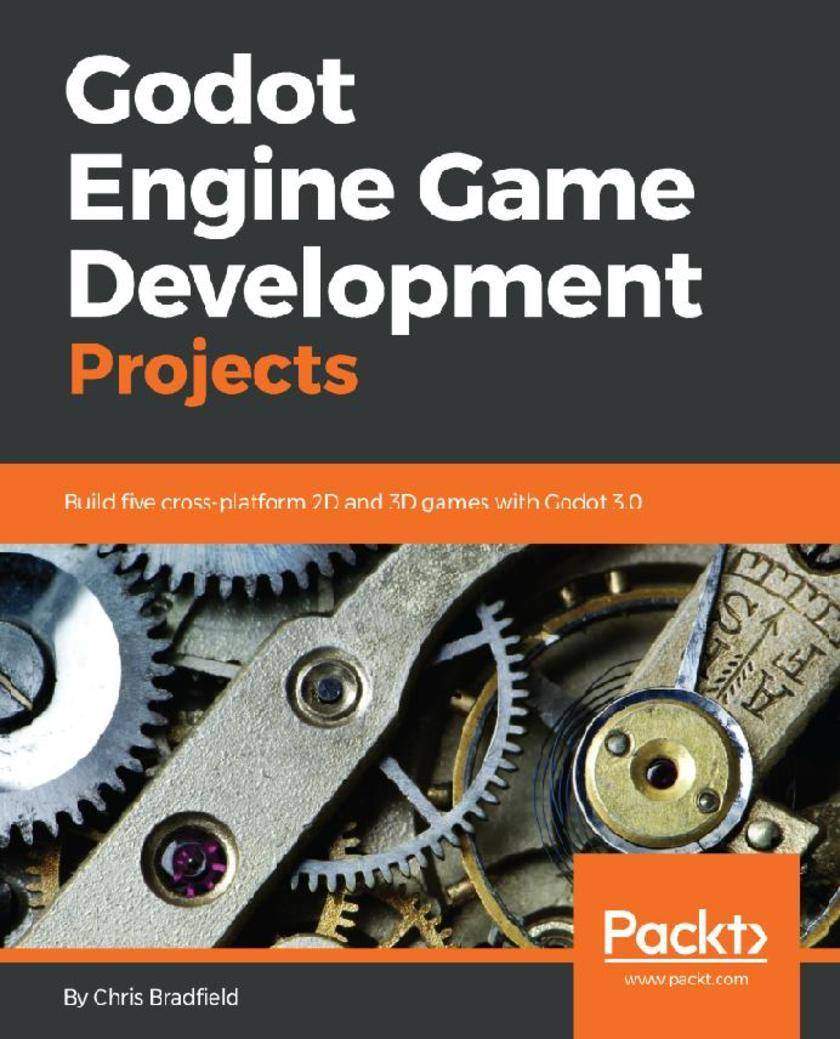
Godot Engine Game Development Projects
¥73.02
Create interactive cross-platform games with the Godot Engine 3.0 About This Book ? Learn the art of developing cross-platform games ? Leverage Godot’s node and scene system to design robust, reusable game objects ? Integrate Blender easily and efficiently with Godot to create powerful 3D games Who This Book Is For Godot Engine Game Development Projects is for both new users and experienced developers, who want to learn to make games using a modern game engine. Some prior programming experience is recommended. What You Will Learn ? Get started with the Godot game engine and editor ? Organize a game project ? Import graphical and audio assets ? Use Godot’s node and scene system to design robust, reusable game objects ? Write code in GDScript to capture input and build complex behaviors ? Implement user interfaces to display information ? Create visual effects to spice up your game ? Learn techniques that you can apply to your own game projects In Detail Godot Engine Game Development Projects is an introduction to the Godot game engine and its new 3.0 version. Godot 3.0 brings a large number of new features and capabilities that make it a strong alternative to expensive commercial game engines. For beginners, Godot offers a friendly way to learn game development techniques, while for experienced developers it is a powerful, customizable tool that can bring your visions to life. This book consists of five projects that will help developers achieve a sound understanding of the engine when it comes to building games. Game development is complex and involves a wide spectrum of knowledge and skills. This book can help you build on your foundation level skills by showing you how to create a number of small-scale game projects. Along the way, you will learn how Godot works and discover important game development techniques that you can apply to your projects. Using a straightforward, step-by-step approach and practical examples, the book will take you from the absolute basics through to sophisticated game physics, animations, and other techniques. Upon completing the final project, you will have a strong foundation for future success with Godot 3.0. Style and approach The book is divided into five parts; each covering a different small-game project using a straightforward, step-by-step approach and practical examples. The book will take readers from the absolute basics through sophisticated game physics, animation, and other techniques.
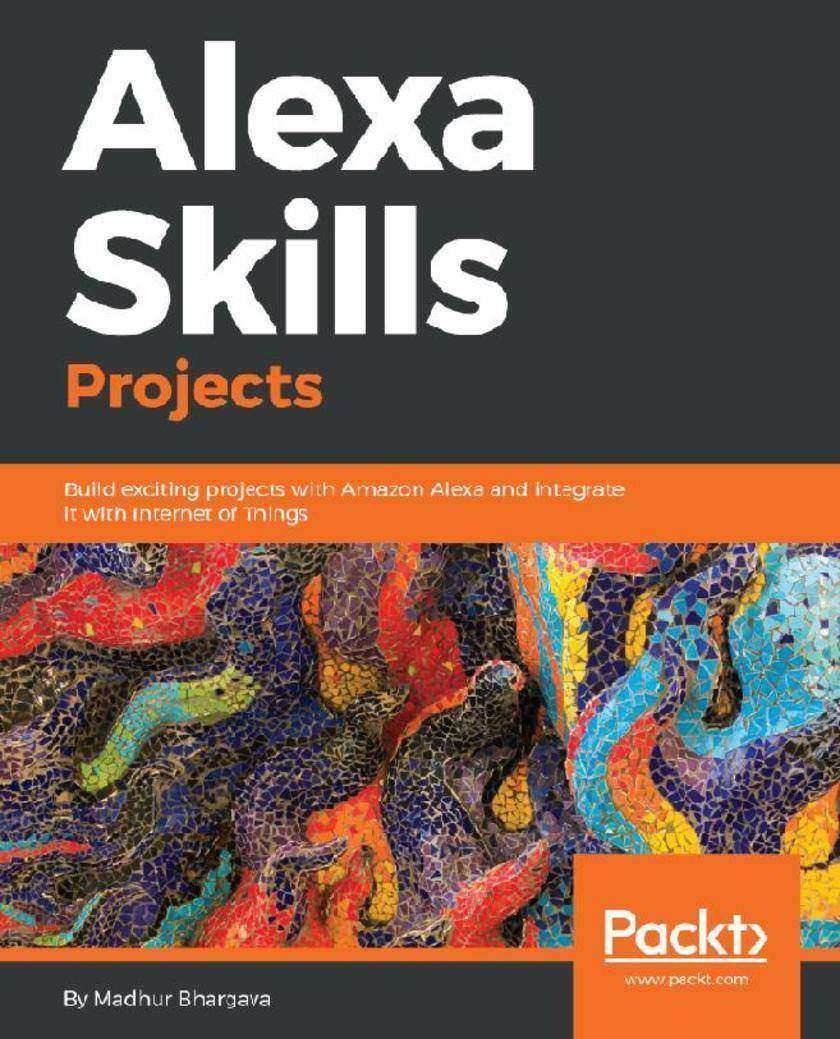
Alexa Skills Projects
¥73.02
Get up and running with the fundamentals of Amazon Alexa and build exciting IoT projects About This Book ? Gain hands-on experience of working with Amazon Echo and Alexa ? Build exciting IoT projects using Amazon Echo ? Learn about voice-enabled smart devices Who This Book Is For Alexa Skills Projects is for individuals who want to have a deep understanding of the underlying technology that drives Amazon Echo and Alexa, and how it can be integrated with the Internet of Things to develop hands-on projects. What You Will Learn ? Understand how Amazon Echo is already being used in various domains ? Discover how an Alexa Skill is architected ? Get a clear understanding of how some of the most popular Alexa Skills work ? Design Alexa Skills for specific purposes and interact with Amazon Echo to execute them ? Gain experience of programming for Amazon Echo ? Explore future applications of Amazon Echo and other voice-activated devices In Detail Amazon Echo is a smart speaker developed by Amazon, which connects to Amazon’s Alexa Voice Service and is entirely controlled by voice commands. Amazon Echo is currently being used for a variety of purposes such as home automation, asking generic queries, and even ordering a cab or pizza. Alexa Skills Projects starts with a basic introduction to Amazon Alexa and Echo. You will then deep dive into Alexa Programming concepts such as Intents, Slots, Lambdas and maintaining your skill’s state using DynamoDB. You will get a clear understanding of how some of the most popular Alexa Skills work, and gain experience of working with real-world Amazon Echo applications. In the concluding chapters, you will explore the future of voice-enabled applications and their coverage with respect to the Internet of Things. By the end of the book, you will have learned to design Alexa Skills for specific purposes and interact with Amazon Echo to execute these skills. Style and approach A practical guide filled with real world examples that will help you understand the process of creating Alexa Skills from scratch and it's real world applications.
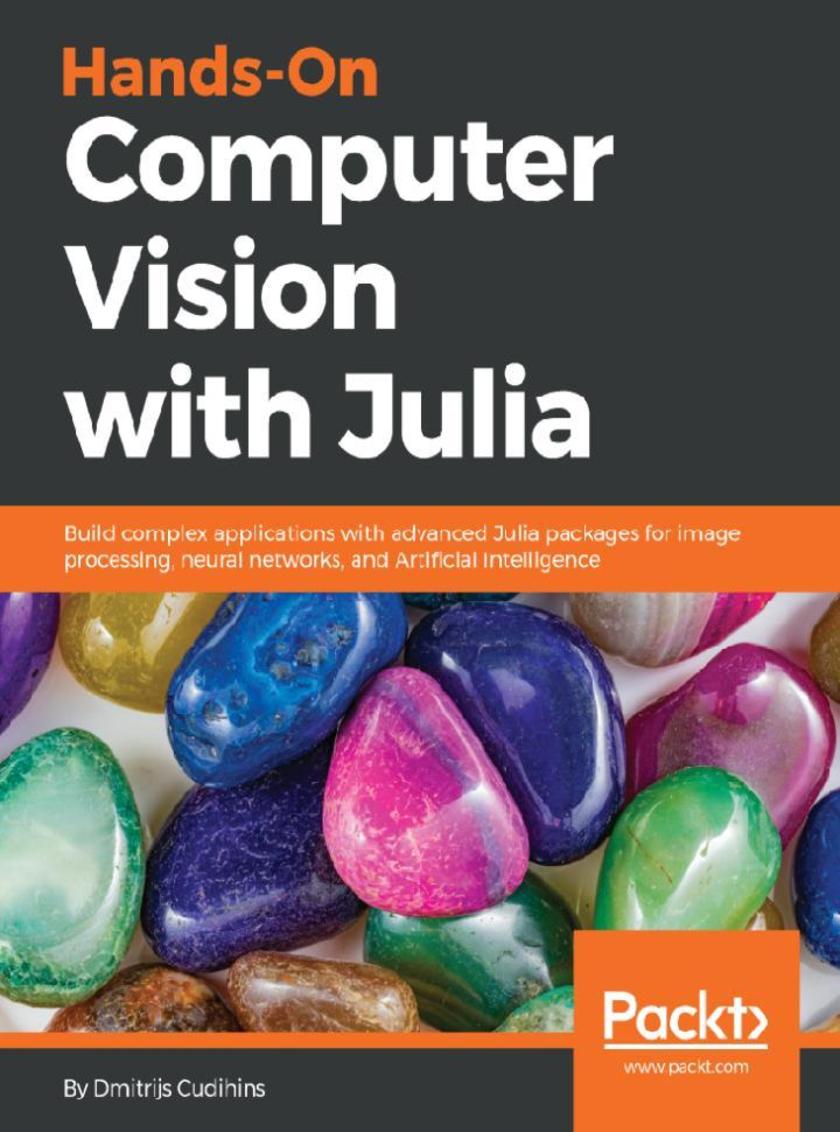
Hands-On Computer Vision with Julia
¥73.02
Explore the various packages in Julia that support image processing and build neural networks for video processing and object tracking. About This Book ? Build a full-fledged image processing application using JuliaImages ? Perform basic to advanced image and video stream processing with Julia's APIs ? Understand and optimize various features of OpenCV with easy examples Who This Book Is For Hands-On Computer Vision with Julia is for Julia developers who are interested in learning how to perform image processing and want to explore the field of computer vision. Basic knowledge of Julia will help you understand the concepts more effectively. What You Will Learn ? Analyze image metadata and identify critical data using JuliaImages ? Apply filters and improve image quality and color schemes ? Extract 2D features for image comparison using JuliaFeatures ? Cluster and classify images with KNN/SVM machine learning algorithms ? Recognize text in an image using the Tesseract library ? Use OpenCV to recognize specific objects or faces in images and videos ? Build neural network and classify images with MXNet In Detail Hands-On Computer Vision with Julia is a thorough guide for developers who want to get started with building computer vision applications using Julia. Julia is well suited to image processing because it’s easy to use and lets you write easy-to-compile and efficient machine code. This book begins by introducing you to Julia's image processing libraries such as Images.jl and ImageCore.jl. You’ll get to grips with analyzing and transforming images using JuliaImages; some of the techniques discussed include enhancing and adjusting images. As you make your way through the chapters, you’ll learn how to classify images, cluster them, and apply neural networks to solve computer vision problems. In the concluding chapters, you will explore OpenCV applications to perform real-time computer vision analysis, for example, face detection and object tracking. You will also understand Julia's interaction with Tesseract to perform optical character recognition and build an application that brings together all the techniques we introduced previously to consolidate the concepts learned. By end of the book, you will have understood how to utilize various Julia packages and a few open source libraries such as Tesseract and OpenCV to solve computer vision problems with ease. Style and approach Readers will be taken through various packages that support image processing in Julia, and will also tap into open-source libraries such as Open CV and Tesseract to find the optimum solution to problems encountered in computer vision.
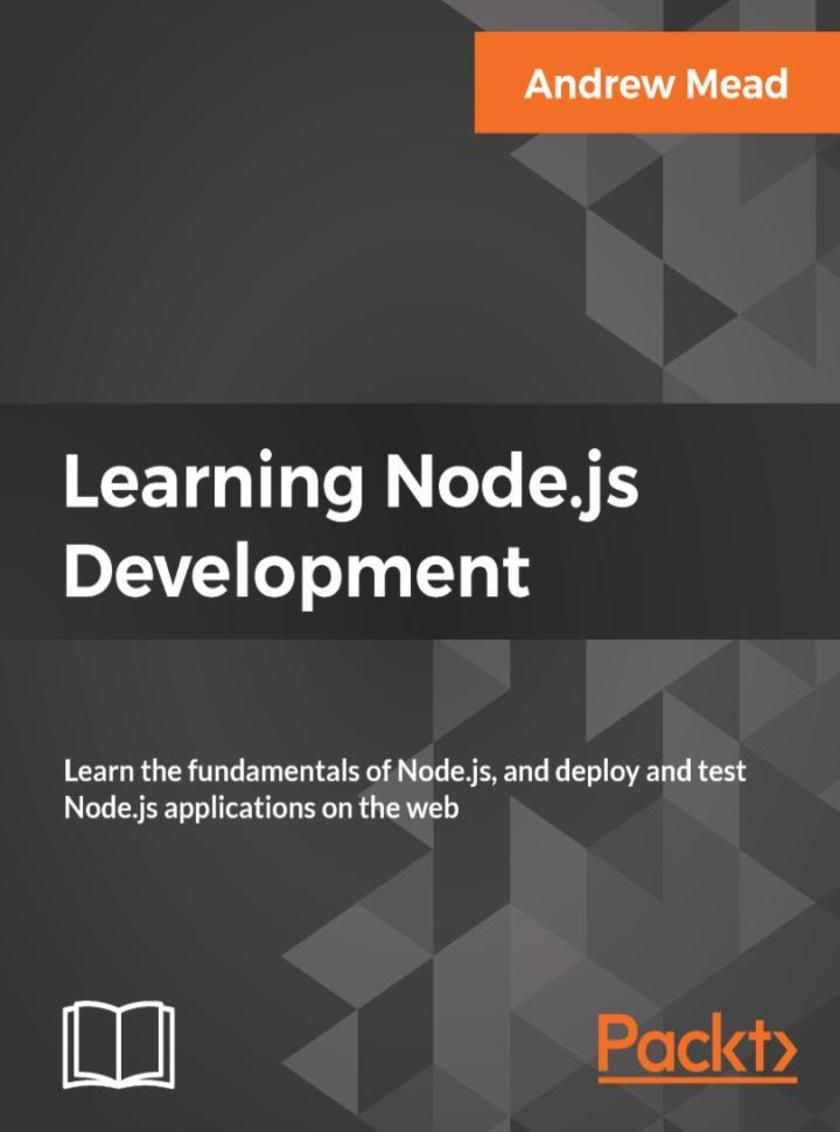
Learning Node.js Development
¥73.02
A comprehensive, easy-to-follow guide to creating complete Node apps and understanding how to build, deploy, and test your own apps. About This Book ? Entirely project-based and practical ? Explains the "Why" of Node.js features, not just the "how", providing you with a deep understanding and enabling you to easily apply concepts in your own applications ? Covers the full range of technologies around Node.js – NPM, version control with Git, and much more Who This Book Is For This book targets anyone looking to launch their own Node applications, switch careers, or freelance as a Node developer. You should have a basic understanding of JavaScript in order to follow this course. What You Will Learn ? Learn the fundamentals of Node ? Build apps that respond to user input ? Master working with servers ? Learn how to test and debug applications ? Deploy and update your apps in the real world ? Create responsive asynchronous web applications In Detail Learning Node.js Development is a practical, project-based book that provides you with all you need to get started as a Node.js developer. Node is a ubiquitous technology on the modern web, and an essential part of any web developers' toolkit. If you are looking to create real-world Node applications, or you want to switch careers or launch a side project to generate some extra income, then you're in the right place. This book has been written around a single goal—turning you into a professional Node developer capable of developing, testing, and deploying real-world production applications. Learning Node.js Development is built from the ground up around the latest version of Node.js (version 9.x.x). You'll be learning all the cutting-edge features available only in the latest software versions. This book cuts through the mass of information available around Node and delivers the essential skills that you need to become a Node developer. It takes you through creating complete apps and understanding how to build, deploy, and test your own Node apps. It maps out everything in a comprehensive, easy-to-follow package designed to get you up and running quickly. Style and approach This book is entirely project-based. From the very beginning you'll be programming every single app and completing various challenges designed to help test and reinforce what you've learned. There's no copying-and-pasting here. This book is about writing code and building projects.
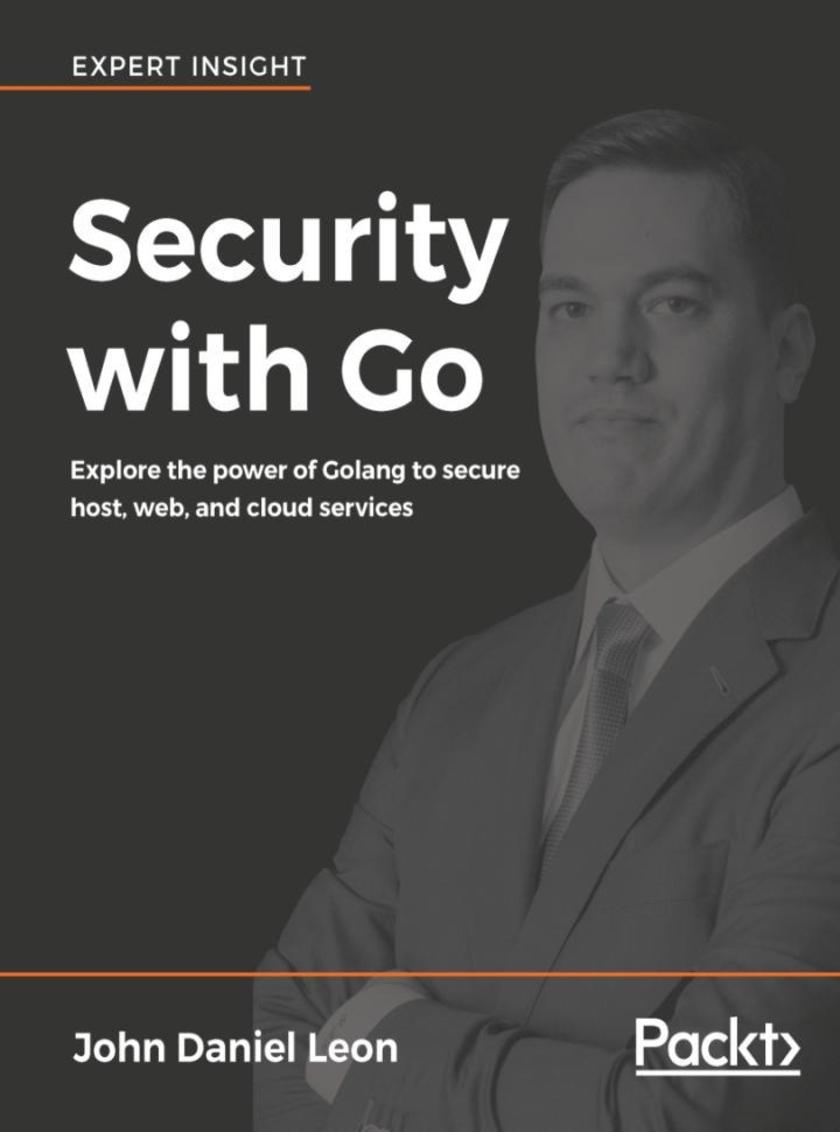
Security with Go
¥73.02
The first stop for your security needs when using Go, covering host, network, and cloud security for ethical hackers and defense against intrusion About This Book ? First introduction to Security with Golang ? Adopting a Blue Team/Red Team approach ? Take advantage of speed and inherent safety of Golang ? Works as an introduction to security for Golang developers ? Works as a guide to Golang security packages for recent Golang beginners Who This Book Is For Security with Go is aimed at developers with basics in Go to the level that they can write their own *s and small programs without difficulty. Readers should be familiar with security concepts, and familiarity with Python security applications and libraries is an advantage, but not a necessity. What You Will Learn ? Learn the basic concepts and principles of secure programming ? Write secure Golang programs and applications ? Understand classic patterns of attack ? Write Golang *s to defend against network-level attacks ? Learn how to use Golang security packages ? Apply and explore cryptographic methods and packages ? Learn the art of defending against brute force attacks ? Secure web and cloud applications In Detail Go is becoming more and more popular as a language for security experts. Its wide use in server and cloud environments, its speed and ease of use, and its evident capabilities for data analysis, have made it a prime choice for developers who need to think about security. Security with Go is the first Golang security book, and it is useful for both blue team and red team applications. With this book, you will learn how to write secure software, monitor your systems, secure your data, attack systems, and extract information. Defensive topics include cryptography, forensics, packet capturing, and building secure web applications. Offensive topics include brute force, port scanning, packet injection, web scraping, social engineering, and post exploitation techniques. Style and approach John Leon has divided the book into two parts which present the team playing defense against anyone breaking into servers and the team playing (ethical!) offense to perform said attacks. All Go *s and programs are workable solutions that can be easily understood and expanded upon by anyone with a system administrator’s level view of networking and cloud-based systems. Golang developers will profit from a swift and incisive approach to security.
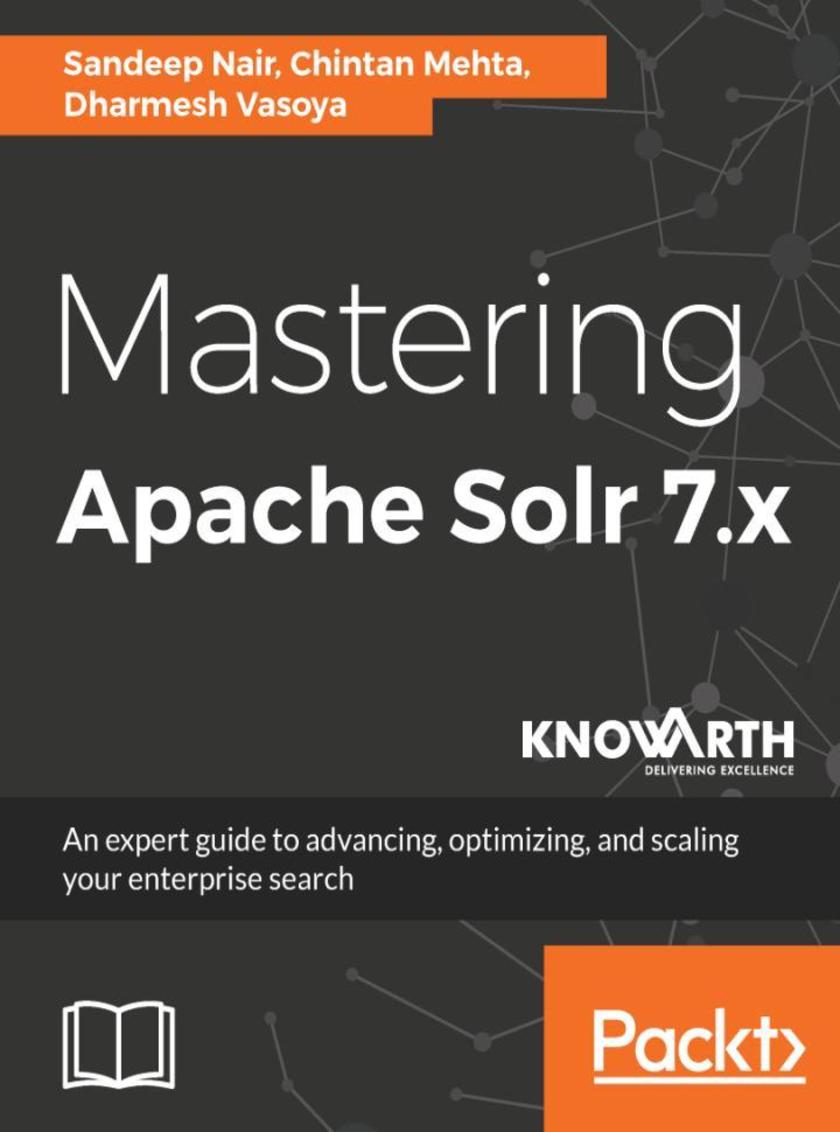
Mastering Apache Solr 7.x
¥73.02
Accelerate your enterprise search engine and bring relevancy in your search analytics About This Book ? A practical guide in building expertise with Indexing, Faceting, Clustering and Pagination ? Master the management and administration of Enterprise Search Applications and services seamlessly ? Handle multiple data inputs such as JSON, xml, pdf, doc, xls,ppt, csv and much more. Who This Book Is For The book would rightly appeal to developers, software engineers, data engineers and database architects who are building or seeking to build enterprise-wide effective search engines for business intelligence. Prior experience of Apache Solr or Java programming is must to take the best of this book. What You Will Learn ? Design schema using schema API to access data in the database ? Advance querying and fine-tuning techniques for better performance ? Get to grips with indexing using Client API ? Set up a fault tolerant and highly available server with newer distributed capabilities, SolrCloud ? Explore Apache Tika to upload data with Solr Cell ? Understand different data operations that can be done while indexing ? Master advanced querying through Velocity Search UI, faceting and Query Re-ranking, pagination and spatial search ? Learn to use JavaScript, Python, SolrJ and Ruby for interacting with Solr In Detail Apache Solr is the only standalone enterprise search server with a REST-like application interface. providing highly scalable, distributed search and index replication for many of the world's largest internet sites. To begin with, you would be introduced to how you perform full text search, multiple filter search, perform dynamic clustering and so on helping you to brush up the basics of Apache Solr. You will also explore the new features and advanced options released in Apache Solr 7.x which will get you numerous performance aspects and making data investigation simpler, easier and powerful. You will learn to build complex queries, extensive filters and how are they compiled in your system to bring relevance in your search tools. You will learn to carry out Solr scoring, elements affecting the document score and how you can optimize or tune the score for the application at hand. You will learn to extract features of documents, writing complex queries in re-ranking the documents. You will also learn advanced options helping you to know what content is indexed and how the extracted content is indexed. Throughout the book, you would go through complex problems with solutions along with varied approaches to tackle your business needs. By the end of this book, you will gain advanced proficiency to build out-of-box smart search solutions for your enterprise demands. Style and approach An advance guide which will take you through complex problems with solutions along with varied approaches to tackle your business needs by using Apache solr 7.x
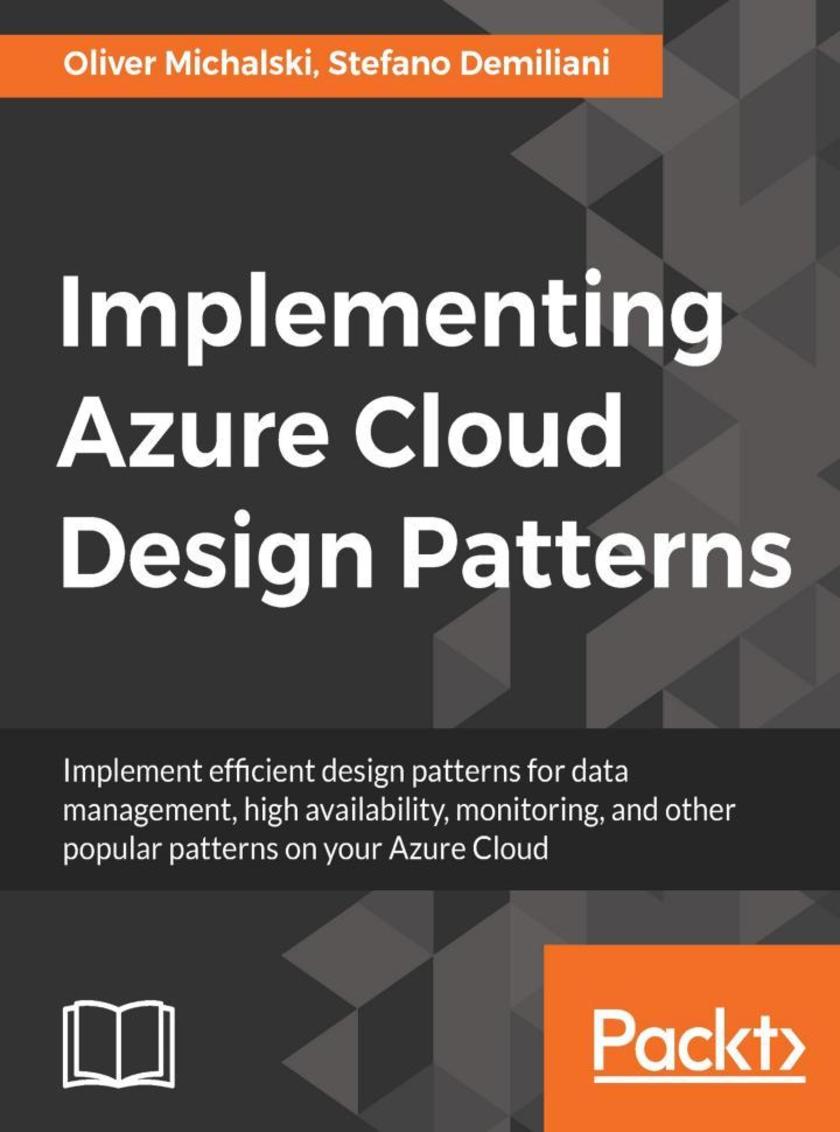
Implementing Azure Cloud Design Patterns
¥73.02
A hands-on guide to mastering Azure cloud design patterns and best practices. About This Book ? Master architectural design patterns in Azure. ? Get hands-on with implementing design patterns. ? Implement best practices for improving efficiency and security Who This Book Is For This book is targeted at cloud architects and cloud solution providers who are looking for an extensive guide to implementing different patterns for the deployment and maintenance of services in Microsoft Azure. Prior experience with Azure is required as the book is completely focused on design patterns. What You Will Learn ? Learn to organize Azure access ? Design the core areas of the Azure Execution Model ? Work with storage and data management ? Create a health endpoint monitoring pattern ? Automate early detection of anomalies ? Identify and secure Azure features In Detail A well designed cloud infrastructure covers factors such as consistency, maintenance, simplified administration and development, and reusability. Hence it is important to choose the right architectural pattern as it has a huge impact on the quality of cloud-hosted services. This book covers all Azure design patterns and functionalities to help you build your cloud infrastructure so it fits your system requirements. This book initially covers design patterns that are focused on factors such as availability and data management/monitoring. Then the focus shifts to complex design patterns such as multitasking, improving scalability, valet keys, and so on, with practical use cases. The book also supplies best practices to improve the security and performance of your cloud. By the end of this book, you will thoroughly be familiar with the different design and architectural patterns available with Windows Azure and capable of choosing the best pattern for your system. Style and approach This step-by-step guide will help you master Azure design patterns and functionalities and also supplies best practices towards the end of the book.
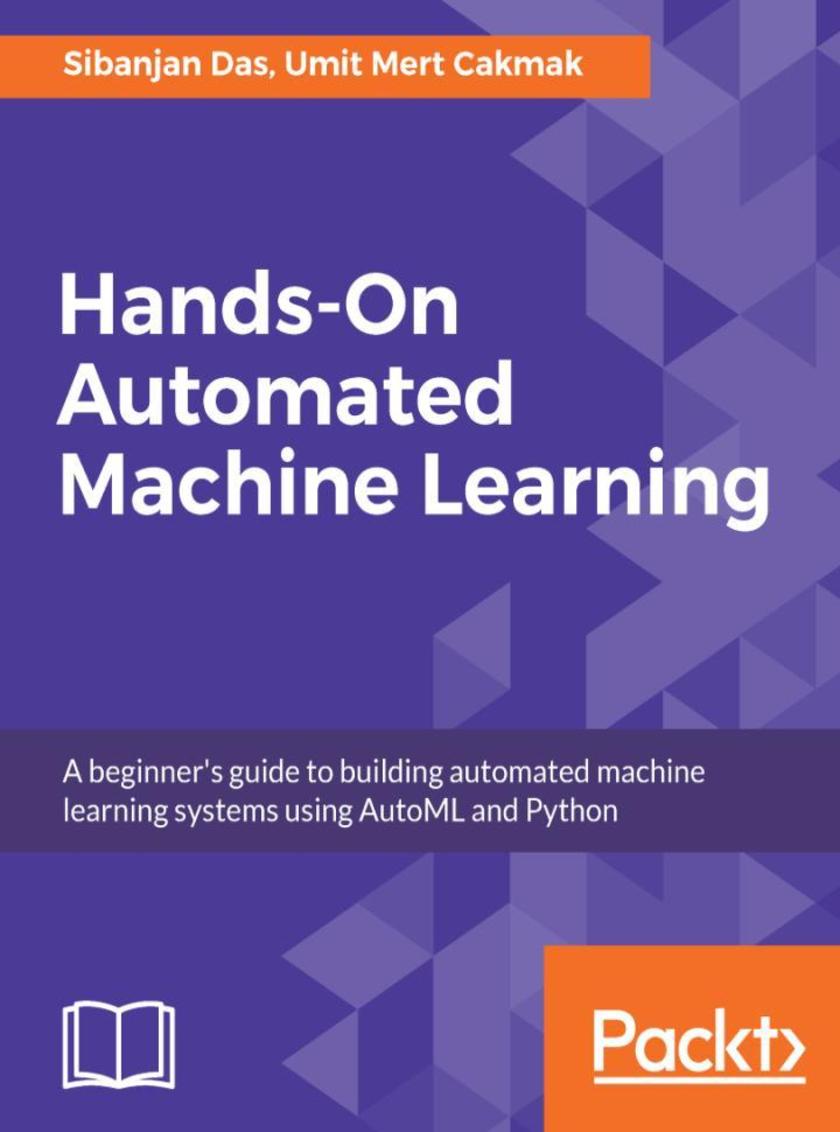
Hands-On Automated Machine Learning
¥73.02
Automate data and model pipelines for faster machine learning applications About This Book ? Build automated modules for different machine learning components ? Understand each component of a machine learning pipeline in depth ? Learn to use different open source AutoML and feature engineering platforms Who This Book Is For If you’re a budding data scientist, data analyst, or Machine Learning enthusiast and are new to the concept of automated machine learning, this book is ideal for you. You’ll also find this book useful if you’re an ML engineer or data professional interested in developing quick machine learning pipelines for your projects. Prior exposure to Python programming will help you get the best out of this book. What You Will Learn ? Understand the fundamentals of Automated Machine Learning systems ? Explore auto-sklearn and MLBox for AutoML tasks ? Automate your preprocessing methods along with feature transformation ? Enhance feature selection and generation using the Python stack ? Assemble individual components of ML into a complete AutoML framework ? Demystify hyperparameter tuning to optimize your ML models ? Dive into Machine Learning concepts such as neural networks and autoencoders ? Understand the information costs and trade-offs associated with AutoML In Detail AutoML is designed to automate parts of Machine Learning. Readily available AutoML tools are making data science practitioners’ work easy and are received well in the advanced analytics community. Automated Machine Learning covers the necessary foundation needed to create automated machine learning modules and helps you get up to speed with them in the most practical way possible. In this book, you’ll learn how to automate different tasks in the machine learning pipeline such as data preprocessing, feature selection, model training, model optimization, and much more. In addition to this, it demonstrates how you can use the available automation libraries, such as auto-sklearn and MLBox, and create and extend your own custom AutoML components for Machine Learning. By the end of this book, you will have a clearer understanding of the different aspects of automated Machine Learning, and you’ll be able to incorporate automation tasks using practical datasets. You can leverage your learning from this book to implement Machine Learning in your projects and get a step closer to winning various machine learning competitions. Style and approach Step by step approach to understand how to automate your machine learning tasks
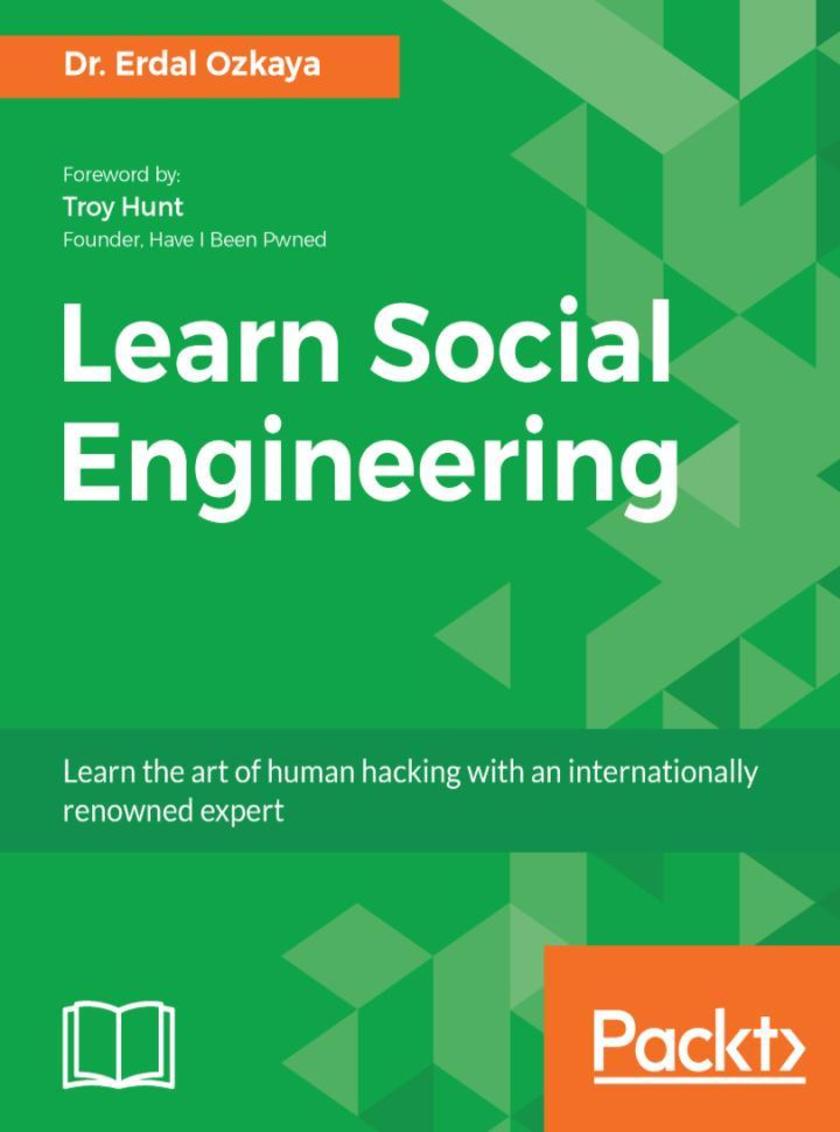
Learn Social Engineering
¥73.02
Improve information security by learning Social Engineering. About This Book ? Learn to implement information security using social engineering ? Get hands-on experience of using different tools such as Kali Linux, the Social Engineering toolkit and so on ? Practical approach towards learning social engineering, for IT security Who This Book Is For This book targets security professionals, security analysts, penetration testers, or any stakeholder working with information security who wants to learn how to use social engineering techniques. Prior knowledge of Kali Linux is an added advantage What You Will Learn ? Learn to implement information security using social engineering ? Learn social engineering for IT security ? Understand the role of social media in social engineering ? Get acquainted with Practical Human hacking skills ? Learn to think like a social engineer ? Learn to beat a social engineer In Detail This book will provide you with a holistic understanding of social engineering. It will help you to avoid and combat social engineering attacks by giving you a detailed insight into how a social engineer operates. Learn Social Engineering starts by giving you a grounding in the different types of social engineering attacks,and the damages they cause. It then sets up the lab environment to use different toolS and then perform social engineering steps such as information gathering. The book covers topics from baiting, phishing, and spear phishing, to pretexting and scareware. By the end of the book, you will be in a position to protect yourself and your systems from social engineering threats and attacks. All in all, the book covers social engineering from A to Z , along with excerpts from many world wide known security experts. Style and approach A step-by-step practical guide that will get you well acquainted with Social Engineering. You’ll be able to get started with it in a matter of minutes with the help of different tools such as the Social Engineering toolkit , Kali Linux and so on.
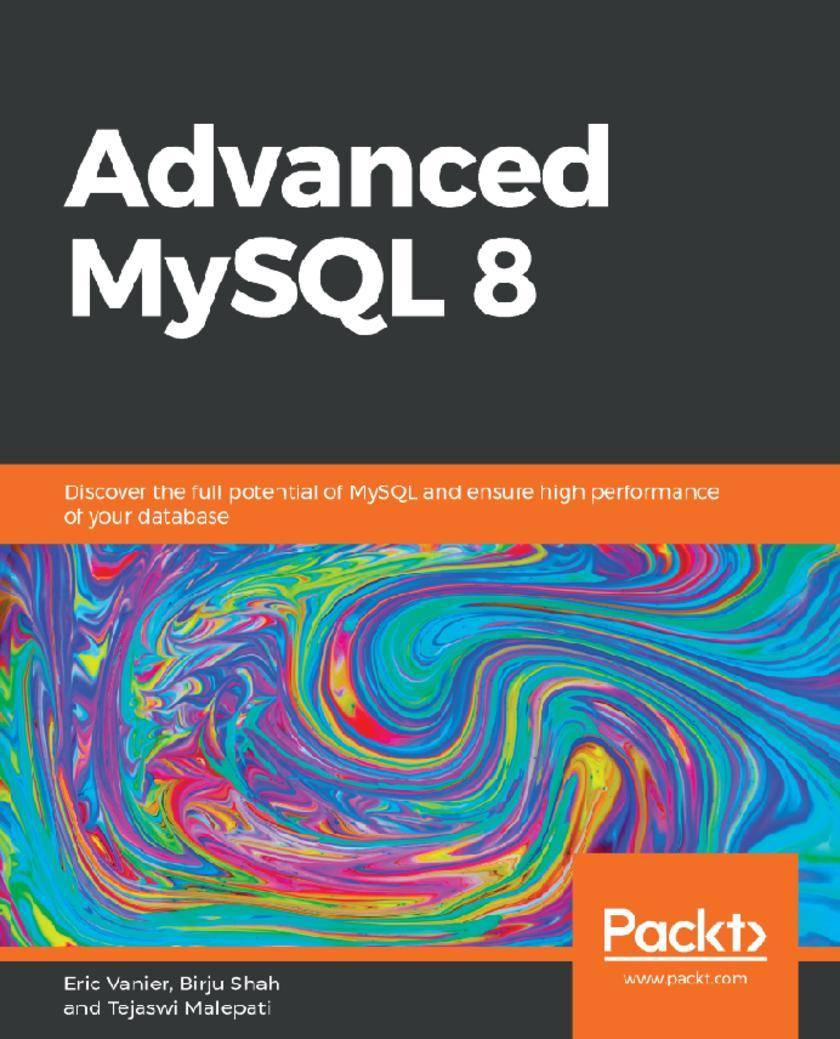
Advanced MySQL 8
¥73.02
Design cost-efficient database solutions, scale enterprise operations and reduce overhead business costs with MySQL Key Features * Explore the new and advanced features of MySQL 8.0 * Use advanced techniques to optimize MySQL performance * Create MySQL-based applications for your enterprise with the help of practical examples Book Description Advanced MySQL 8 teaches you to enhance your existing database infrastructure and build various tools to improve your enterprise applications and overall website performance. The book starts with the new and exciting MySQL 8.0 features and how to utilize them for maximum efficiency. As you make your way through the chapters, you will learn to optimize MySQL performance using indexes and advanced data query techniques for large queries. You will also discover MySQL Server 8.0 settings and work with the MySQL data dictionary to boost the performance of your database. In the concluding chapters, you will cover MySQL 8.0 Group Replication, which will enable you to create elastic, highly available, and fault-tolerant replication topologies. You will also explore backup and recovery techniques for your databases and understand important tips and tricks to help your critical data reach its full potential. By the end of this book, you’ll have learned about new MySQL 8.0 security features that allow a database administrator (DBA) to simplify user management and increase the security of their multi-user environments. What you will learn * Explore new and exciting features of MySQL 8.0 * Analyze and optimize large MySQL queries * Understand MySQL Server 8.0 settings * Master the deployment of Group Replication and use it in an InnoDB cluster * Monitor large distributed databases * Discover different types of backups and recovery methods for your databases * Explore tips to help your critical data reach its full potential Who this book is for Advanced MySQL 8 is for database administrators, data architects, and database developers who want to dive deeper into building advanced database applications in the MySQL environment.




 购物车
购物车 个人中心
个人中心



